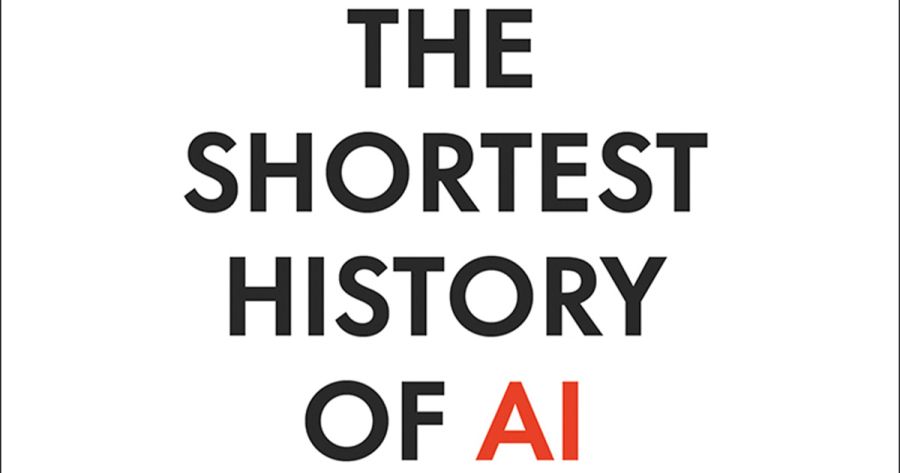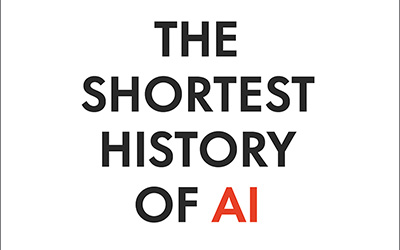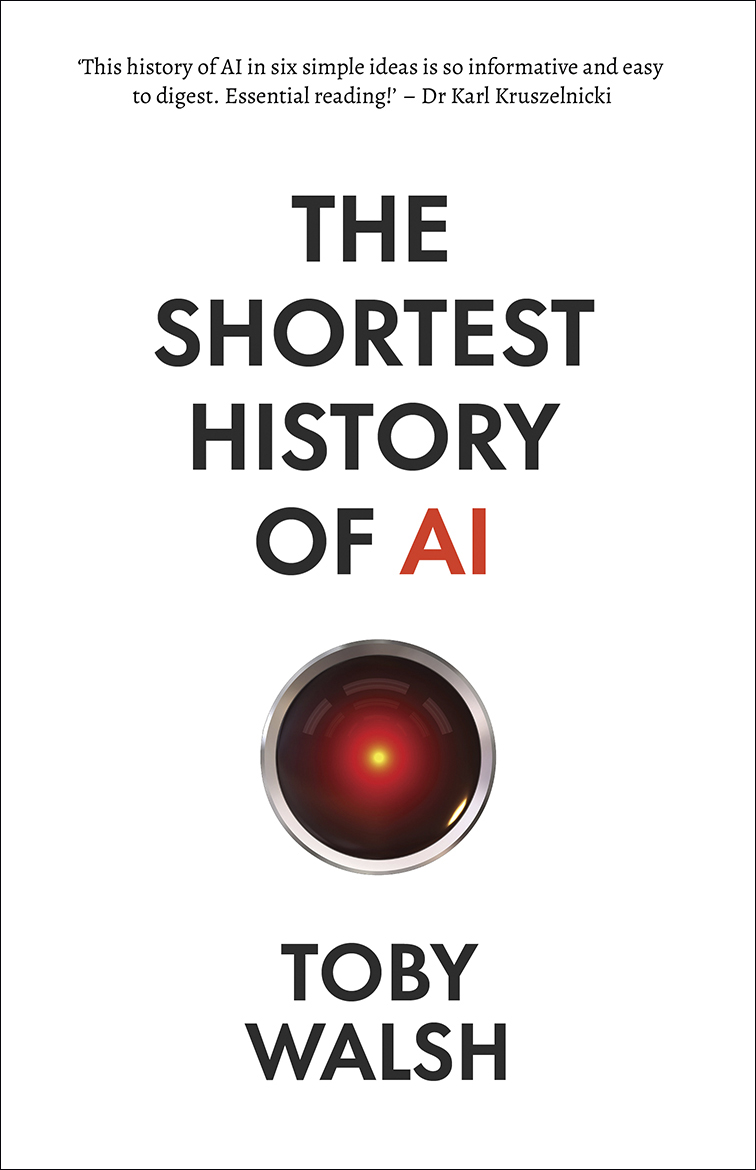
- Free Article: No
- Contents Category: Technology
- Review Article: Yes
- Article Title: A worse world
- Article Subtitle: History from the future
- Online Only: No
- Custom Highlight Text:
Toby Walsh’s The Shortest History of AI begins and ends with a sermon against panic. ‘Our children’, writes Walsh, ‘are set to inherit a worse world than the one we were born into, due to a raft of problems, some of which are caused by AI.’ The next couple of decades ‘will be challenging’. Yet Walsh is unequivocal in his faith: first, that artificial intelligence scientists will eventually achieve their final goal, ‘matching human intelligence in all its richness’, and second, that such a feat will be ultimately beneficial to humanity. The secret to such optimism, in the face of acknowledged ‘challenges’ ranging from racial and gendered bias to the ‘existential’, lies in learning ‘the lessons of the past’. And this book, writes Walsh, is not a bad place to start learning those lessons.
- Featured Image (400px * 250px):

- Alt Tag (Featured Image): André Dao reviews ‘The Shortest History of AI’ by Toby Walsh
- Book 1 Title: The Shortest History of AI
- Book 1 Biblio: Black Inc., $27.99 pb, 224 pp
- Book 1 Cover Small (400 x 600):

- Book 1 Cover (800 x 1200):

- Book 1 Readings Link: https://www.readings.com.au/product/9781760645137/the-shortest-history-of-ai--toby-walsh--2025--9781760645137#rac:jokjjzr6ly9m
The problem for Walsh is that there is a fundamental mismatch between this promise and the actual content of his book. He assumes that the casual reader panicking over artificial intelligence just needs the technology to be demystified; that if we only understood how artificial intelligence worked, then reasonable calm would prevail. But for anyone concerned with the social and environmental harms caused by AI technologies, a technical history of the development of artificial intelligence only takes us half-way. Artificial intelligence, like any technology, shapes and is shaped by the societies that develop it. That means it is not a mere tool separate from the problems it is used to solve, but rather deeply entangled in those problems. Take one of the looming challenges Walsh notes: artificial intelligence will cause huge disruption to employment. The capacity of artificial intelligence to automate existing jobs is part of the story, and that is the part that Walsh tells. But so too is the fact that almost all artificial intelligence is being developed in a specific economic system by highly financialised for-profit corporations. Understanding the impact of artificial intelligence on employment therefore requires more than a technical understanding of how specific tasks might be automated.
Unfortunately, Walsh’s Shortest History only has room for the technical history. Setting aside the shortfall between promise and delivery, what Walsh provides is a decent introduction to the technical innovations behind the pursuit of artificial intelligence – an AI primer, rather than a guide to managing disruption and harm. Indeed, the book is organised, like a textbook, into six ‘ideas’ for achieving what Walsh calls an ancient dream, ‘to build a machine that could think’. These six ideas are, in turn, split into two eras.
In the first era, running from the 1950s to the 1990s, AI scientists tried to produce intelligence through symbolic systems. They began by representing some part of the world through symbols, and then reducing problems to the search for an answer in that symbolic universe (Idea One). Early AI systems were then programmed to make the best possible move in a competitive setting (Idea Two) and simulating human expertise by following simple rules (Idea Three). Symbolic AI systems were particularly good at playing games like chess, given that such games are easily translated into symbols (chess already comes with a symbolic notation system), have clear rules, and revolve around moves that can readily be evaluated against a clearly defined goal (winning!).
The limitations of symbolic systems – they had to be programmed, slowly and painfully – led to an ‘AI winter’. Summer came around with the dawn of the learning era, the cornerstone of which was the discovery that the human brain could be copied with a network of artificial neurons that learn from experience (Idea Four). Couple that with the insight that these artificial neural networks can learn from experience by rewarding success and penalising failure (Idea Five), and compute the probability of an event (Idea Six), and you have the groundwork for the extraordinary boom in artificial intelligence of recent years.
As a work of science communication, this Shortest History is immensely readable. Walsh’s folksy tone moves seamlessly between science fiction references and biographies of AI pioneers to highly accessible descriptions of mathematics and technical systems. Standouts include his excellent description of transformers (the ‘T’ in ChatGPT), which comes with the timely reminder that these large language models operate on statistical probability and so do not understand language the way humans do. Equally impressive is the way Walsh carefully steps through Thomas Bayes’s theorem for computing the probability of an event using a hypothetical Covid-19 detector.
In some ways, it seems foolish to expect much more of a Shortest History, whatever the subject. Surely a primer demystifying how AI technologies work is a start? After all, you could read Walsh to understand the tech, and then read Nick Couldry and Ulises Mejias in Data Grab (2024), or Ruha Benjamin in Race After Technology (2010), or Mary L. Gray and Siddharth Suri in Ghost Work (2019). But that would be to misunderstand what this Shortest History is really doing. Like any primer, Walsh’s book not only introduces its subject; it draws boundaries around what properly belongs within the discipline. The core history being told here is a history of technical innovations. Any critiques of artificial intelligence’s complicity in relations of gender, race, colonialism, or extractive capitalism are rendered supplementary, and therefore, by default, marginal.
The result is a pervasive technological solutionism. For instance, Walsh notes that the sexism generated by ChatGPT and other large language models is caused by sexism in ‘the text on which the encoder is trained’. In other words, artificial intelligence reproduces the sexism of the social worlds from which its training texts are taken – a sexism that has proven to be both protean and resilient. Yet Walsh assures us that a technical solution is around the corner: ‘If we work harder, sexism (and other unwanted biases) in word vectors can be fixed.’ In another telling moment, Walsh refers to an AI chatbot being used to treat PTSD among asylum seekers due to a shortage in human therapists. ‘It’s not ideal,’ writes Walsh, ‘but perhaps it’s better than nothing?’ A political problem – the global order that produces mass forced migration and the entirely inadequate response to it in wealthy countries – is naturalised and reduced to a problem an AI system can address. Alternative ways of ordering human migration are sidelined, and instead we look only for ways of making the current order more efficient. The possibility that rolling out AI chatbots to manage severe trauma might be harmful is quietly elided.
The critical failure of The Shortest History of AI, and the reason it is nevertheless illuminating, if read against its own grain, is that it is ultimately, for all its grand claims, an intimate portrait of a particular community. Throughout the book, Walsh is at pains to stress that artificial intelligence is a small field, and that over his forty-year career he has met almost all of artificial intelligence’s pioneers. Though Walsh gestures to the importance of collective action and collective knowledge, his history is largely the history of a few individual geniuses who developed and refined the six key ideas behind artificial intelligence.
This is a failure because it entirely neglects to account for the fact that artificial intelligence today is underpinned by the industrial extraction, organisation, and manipulation of data. Walsh hints at this reality as his pioneers transform over time from eccentric professors to the chief AI scientists at Big Tech firms like Google and Meta. But apart from invoking the share value of Big Tech firms, and the dollar amounts of investments in new technologies, Walsh shows little inclination to question how corporations have played a central role in transforming AI from a cottage academic discipline to a world-altering industry.
Instead, Walsh surveys the history of artificial intelligence from the perspective of a future in which artificial intelligence’s benefits to humanity will already have been achieved. From this vantage point, the necessary lessons about the harms of artificial intelligence will already have been learned. Little wonder then that AI scientists insist that they be allowed to push on, no matter the costs – they, at least, have no doubt that it will all end well.


Comments powered by CComment